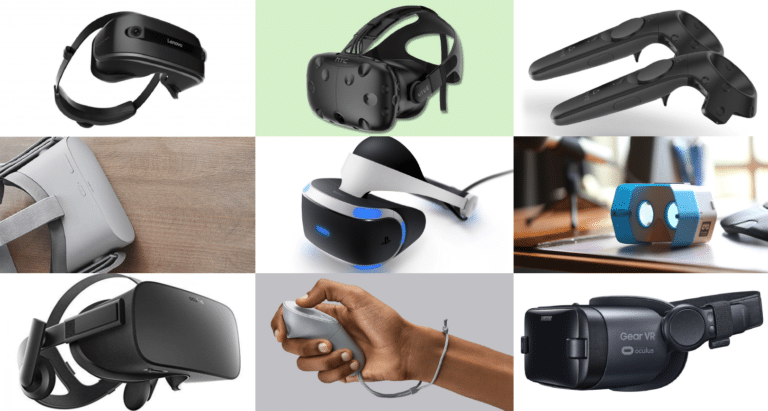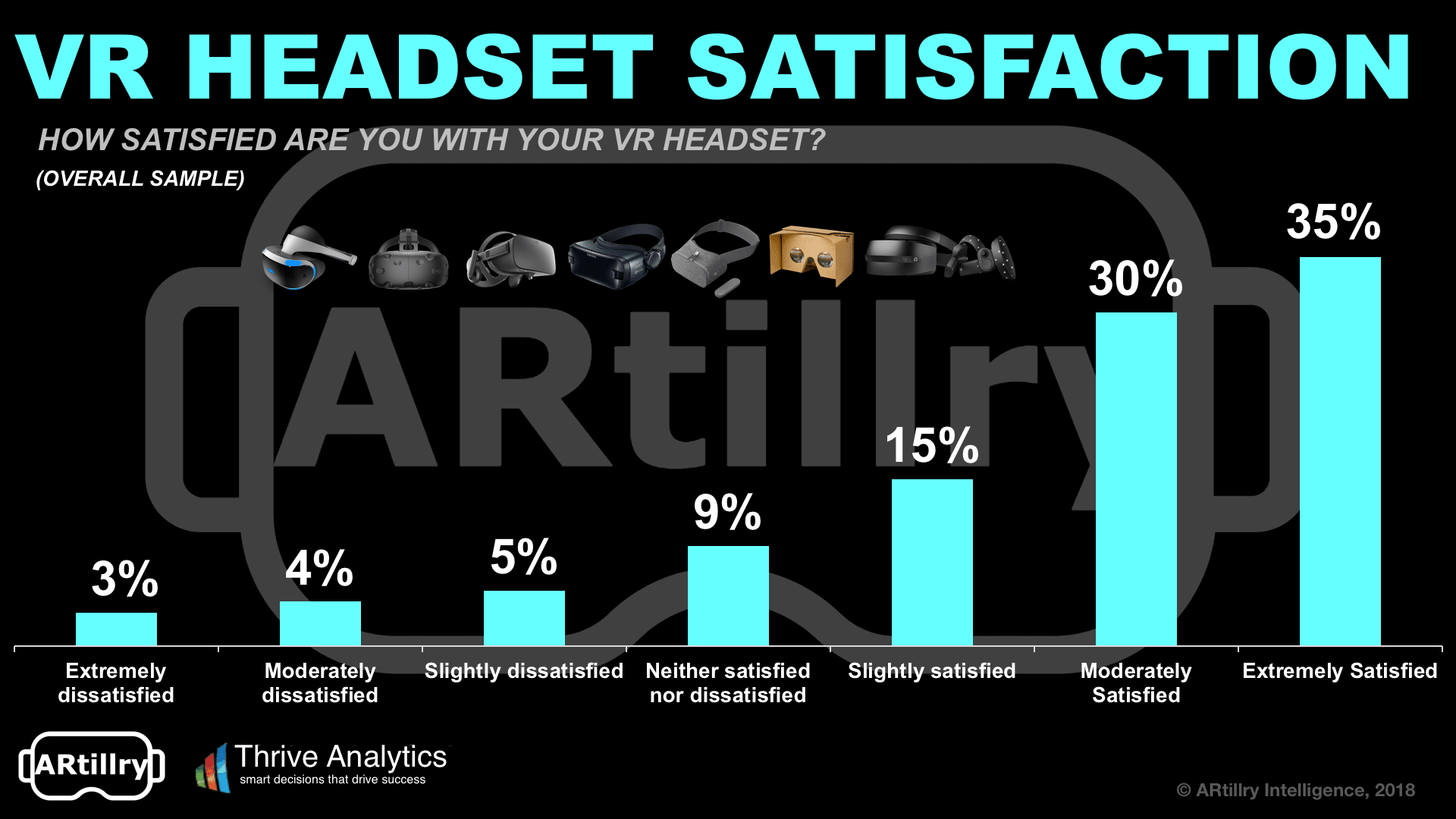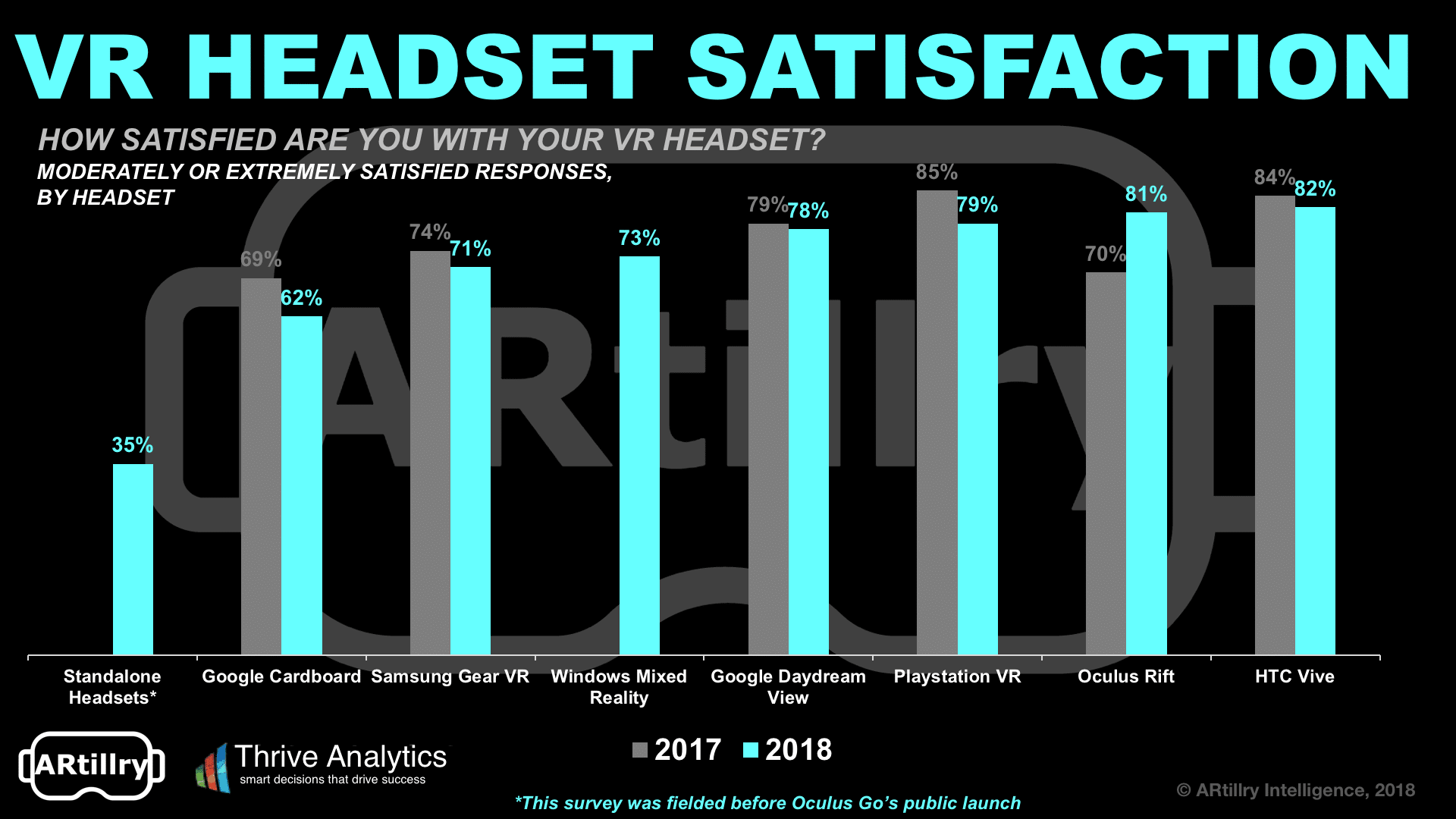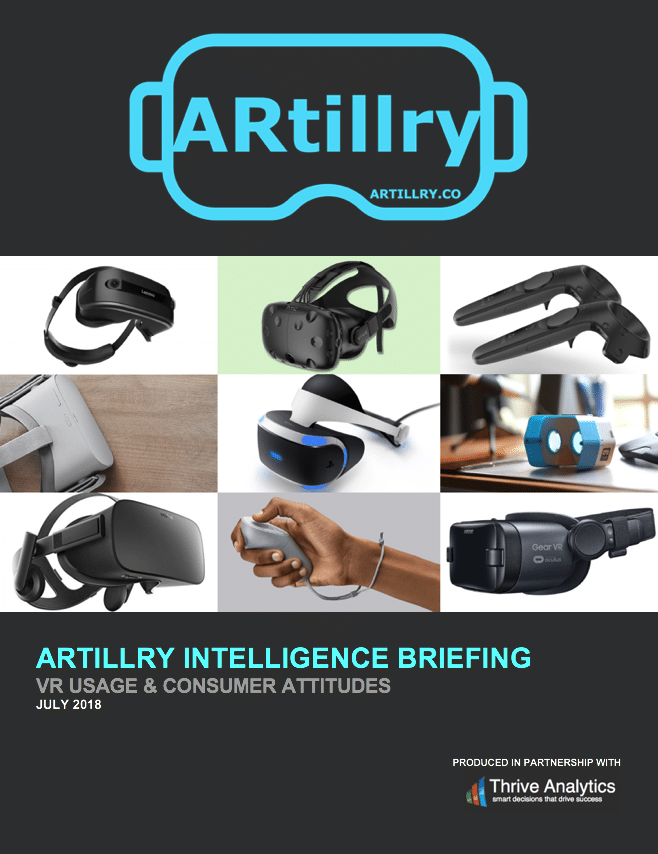
This post is adapted from ARtillry’s latest Intelligence Briefing, VR Usage & Consumer Attitudes. It includes some of its data and takeaways, including original survey research. More can be previewed here and subscribe for the full report.
Drilling down from VR headset ownership trending (see last week’s post), how are consumers satisfied with their headsets? And which headsets score highest? Overall, the takeaway is that satisfaction levels are favorable across the board, indicating a strong future for VR.
Specifically, 65 percent of users are moderately satisfied (30 percent) or extremely satisfied (35 percent). This contrasts the opposite end of the satisfaction spectrum where only 7 percent of users are either moderately dissatisfied (4 percent) or extremely dissatisfied (3 percent).
These are strong quality signals. In fact, few consumer products show such high satisfaction levels. However, we should note that the AR results in our sister report in May showed even higher satisfaction levels, with 73 percent of users moderately or extremely satisfied.
This tells us a few things. For one, VR’s highly visual and immersive format, though still early, is already captivating consumers. This is due to its revolutionary – rather than evolutionary – interface when compared with non-immersive experiences in other media formats.

These satisfaction levels also align with another key principle ARtillry has observed. After receiving a VR demo — say a gaming or productivity app — new users often grasp it right away, then ideate other areas where it might apply to their lives and work.
“I’ve been working in tech for many years and have never seen a new technology that people understand so quickly when you give them a demo,” Strata CEO John Wright told ARtillry recently. “And their minds will immediately go to other VR applications that make sense.”
One reason for this cognitive leap is VR’s visual intensity. It strikes users to such an immersive degree that they understand it on deeply visceral levels. But because it’s so visceral, it can’t be explained in words. So people have to try it in person to get excited about it and really “get it.”
This is all to say that it stands to reason that VR satisfaction is so high for those who have tried it. But that contrasts the low interest levels for those who haven’t (explored later in this report). This underscores one of the industry’s biggest challenges: getting people to just try it.

Drilling down, how do the above satisfaction ratings map to individual devices? Answering that question can indicate the VR features and formats that resonate most with consumers. The high-level takeaway is that satisfaction is high across the board, with some variance.
Specifically, how do satisfaction ratings array within each headset? For each headset, what percentage of users are moderately or extremely satisfied? The highest score on this measure goes to HTC Vive (82 percent) followed closely by Rift (81 percent), then PSVR (79 percent).
These rankings aren’t surprising, as they represent VR’s top tier. But the biggest mover of the three is Oculus Rift, which grew from 70 percent to 81 percent satisfaction in Wave II. Similar to ownership shares, Rift’s growth is a result of Facebook/Oculus’ recent investments in VR.
As mentioned elsewhere in this report, Facebook’s deep pockets and its drive towards a long-term platform strategy engender aggressive price competition (which margin-dependent hardware players like HTC and Samsung can’t do). It also invests in content production.
Moving on to satisfaction levels for lower-tier headsets, they likewise scored high and, in some cases, surprisingly so. For example, Daydream View scored just one point lower than PlayStation VR. However, its specifications and user experience are far less advanced.
Samsung Gear VR’s 71 percent satisfaction rating is logical, as is Cardboard’s 62 percent. Standalone VR scored lowest, which makes sense for one reason: The survey was fielded before Oculus Go’s launch, when standalone VR was characterized by lower-quality devices.
We believe that this survey’s next wave will identify the standalone category with much greater satisfaction ratings, due to Oculus Go. In our ongoing use and testing of Oculus Go, it has impressed us in quality levels and price, due mostly to Oculus’ investments mentioned above.
For more, preview the report or subscribe to access the entire thing.

For a deeper dive on AR & VR insights, see ARtillry’s new intelligence subscription, and sign up for the free ARtillry Weekly newsletter.
Disclosure: ARtillry has no financial stake in the companies mentioned in this post, nor received payment for its production. Disclosure and ethics policy can be seen here.
